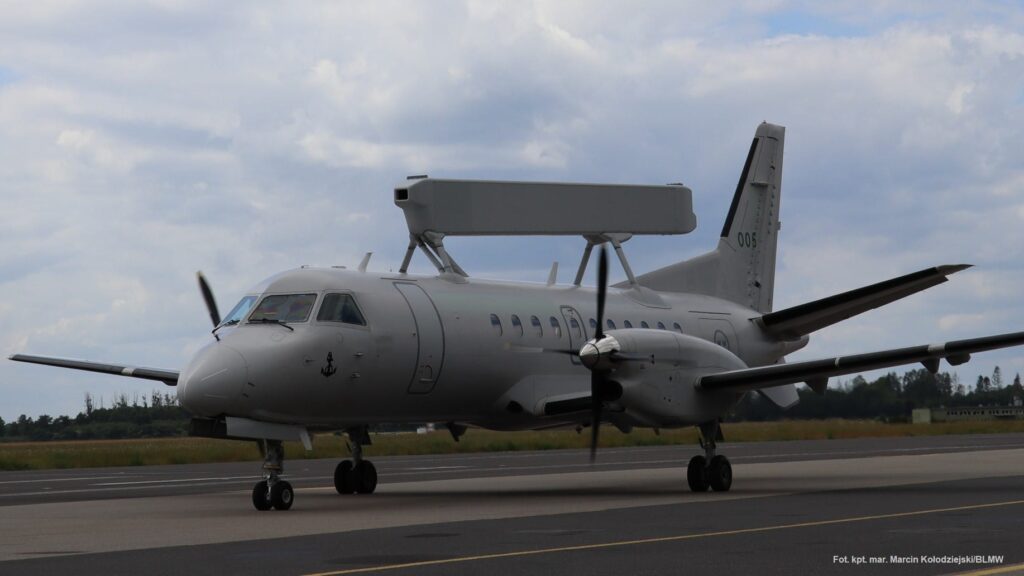SAAB AWACS Delivery For Poland Completed
The delivery of the newest Polish AEW&C aircraft was concluded yesterday, as the Secretary of State in the Ministry of Defense, Paweł Bejda, announced the completion of deliveries of the Saab-built AEW&C aircraft for Polish Air Force. Until now the PAF relied on NATO and allied AWACS aircraft for the monitoring and control of its airspace.
The contract for the procurement of two SAAB 340 AEW&C aircraft was finalized in late July 2023 as an immediate operational need. Poland’s provisions for its peacetime airspace security were exposed with the PAF lacking organic airborne warning and control aircraft. For the first time in history, the PAF has its own AEW&C capability for active and passive air posturing if needed. With the raging conflict to the East, Poland found itself threatened by the possible incursion of missiles and even aircraft coming from non-aligned states.
When the deal was signed in July 2023, head of Saab’s surveillance business area, Carl-Johan Bergholm, said: “We are proud to further strengthen Poland’s Armed Forces with our airborne early warning and network-based solutions.” The SAAB 340 AEW&C is equipped with an Erieye radar system with a 150-degree azimuth on each side of the plane. Introduced in 1996, Erieye is used by a variety of countries including Greece, Saudi Arabia, and Brazil. Despite limited range and power, the radar system itself enables much better situational awareness for the air force and provides early recognition of air targets and threats than land-based systems.
The AEW&C is not the only addition to the Polish increase in air awareness capabilities. In may 2024 the Polish MoD approved a purchase of “BARBARA” radar systems operated by a fleet of air balloons. In total four of these airborne radars from Raytheon will be delivered to Poland by 2028. Poland is still seeking to gain additional AEW&C capabilities in the long run and an aerial refueling platform. With the upcoming introduction of the F-35 jets into service, and the rising threat from the Russian Federation, the introduction of new assets into the PAF are a necessity and represent an investment in safer air space by the end of this decade.

